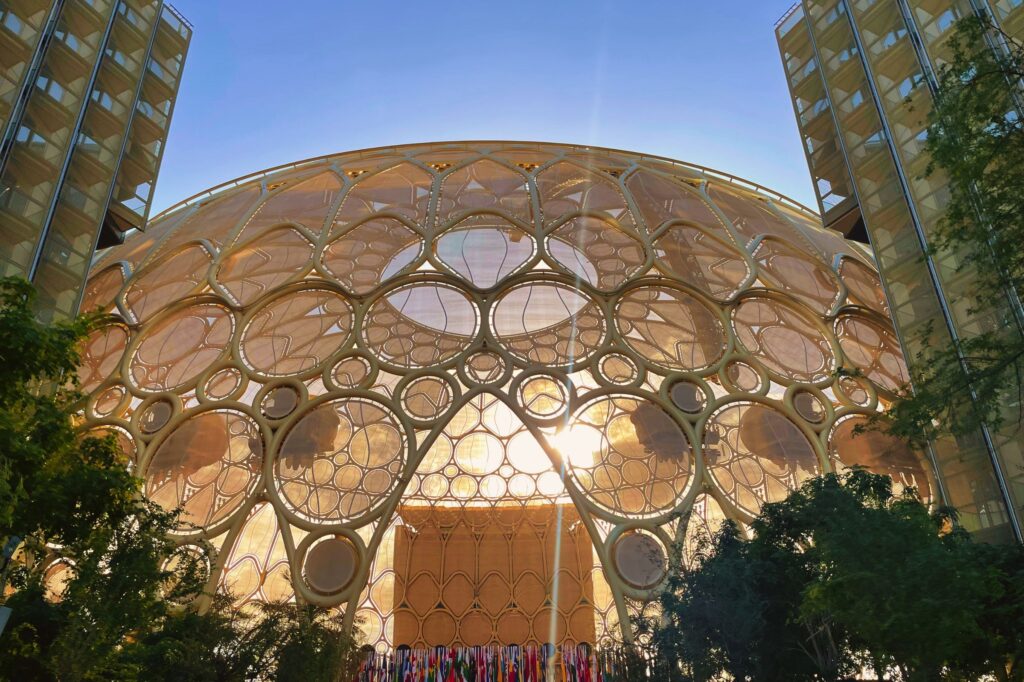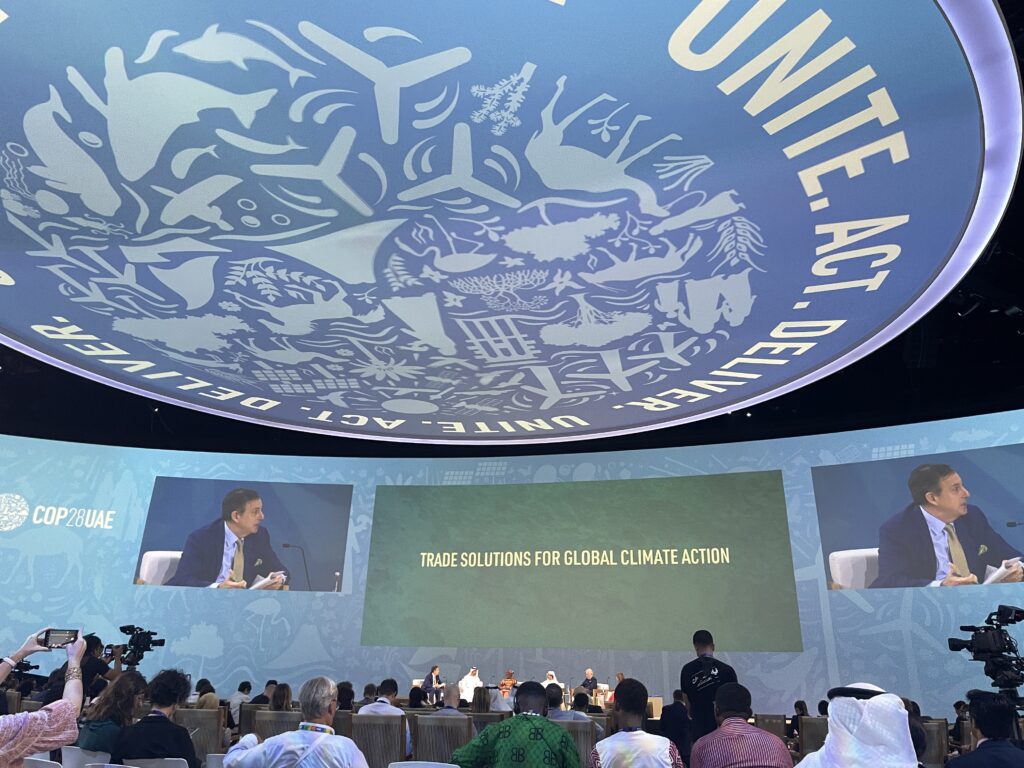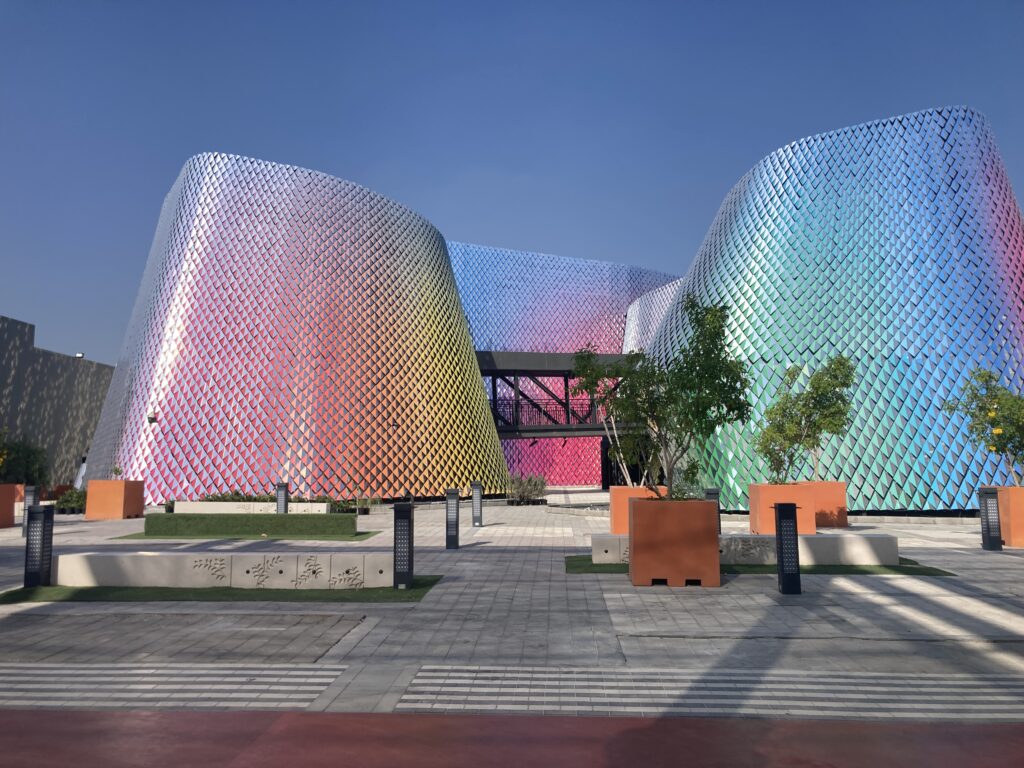The COP28 Halftime Report
Has the annual UN climate conference grown too big to function? Takeaways from Week 1 of COP28 in Dubai.

We’ve reached the midpoint of the annual, two-week international climate conference known as COP (for “conference of parties”), so it’s a good time to reflect on what’s gone down in Dubai. I’m attending along with a delegation of UCLA Law students and colleagues here to follow a range of issues, from methane regulation to China’s global role to regenerative agricultural practices.
Having been to more than a handful of these conferences going back to Copenhagen in 2009, I am struck by a few dynamics that seem different this year. Here are four mid-COP takeaways.

First: Areas of progress so far include critically important issues, but only ones that are untethered to, and don’t directly implicate, the need to reduce fossil fuel use. This is true, for example, for the progress on establishing the new ‘loss and damage’ fund and the pledges of hundreds of millions of dollars into that fund to help developing countries bear the costs of climate change damage. That work is essential and has attracted a lot of attention as an early COP success. So have the many, many announcements and initiatives concerning new efforts to reduce methane emissions from the waste sector, agricultural operations, and oil and gas facilities that leak and vent the potent greenhouse gas. While reducing methane emissions is key to reaching climate goals and I celebrate these developments, I also note the reasons why this COP Presidency—chaired, as we have all been reminded, by the head of one of the world’s largest oil and gas entities—might choose issues like these as marquee opportunities for COP victories, since none of these wins requires a reduction in fossil fuel consumption.
Second, and by contrast an area of significant continued disagreement, concerns the Global Stocktake. That is the required periodic review of whether parties are doing enough to reduce emissions in light of the goals of the Paris Agreement to limit warming. (As the recent UNEP emissions gap report makes clear, they are not.) How starkly to communicate that failure, and what to say about how to right that failure, are questions being fought in diplomat-speak in rooms across the venue. Language options in the current draft on the future of fossil fuels range from a “phasedown of unabated coal power” to “an orderly and just phase out of fossil fuels.” Will this COP manage to call for the phase out of fossil fuels in a meaningful way? Could it, given its setup and leadership? (Almost certainly not; we’ll see.)
Speaking of which, and third on my list: clear communication of the scientific consensus. If you want to turn a weary public’s attention to the precise, nitty-gritty details of what scientists have said, or haven’t said, about the need to end fossil fuel usage, it turns out your best move would be to make a high-stakes, high-profile statement that there’s no science behind calls for a phase-out. Climate scientists everywhere may actually owe a debt of thanks to Sultan al-Jaber for inspiring clear-eyed stories like this one, detailing the scientific evidence supporting a phase-out of fossil fuels.

And finally, lots of folks are wondering whether COP has gotten too big to function well. This story by Carbon Brief crunches the numbers and shows that with nearly 100,000 registrants this year, COP28 is about twice as big as last year’s COP and far larger than historical norms. I’ve overheard many delegates talk about how much harder it is to coordinate, collaborate, network, and just plain function in an environment with this many people. One of the essential functions of a COP is to facilitate meaningful discussions among advocates, scientists and policy experts from around the world. That work gets harder if the community is too large. Of course, this difficulty is exacerbated this year by the oddness of the Expo 2020 COP28 venue, which is dispersed and disaggregated to the point of absurdity. Whereas past COPs have typically taken place in centralized, open-concept convention halls where folks could easily trip into interesting events and people as they wandered through, this year each pavilion and meeting hub is given its own separate building or office space, frequently behind closed doors, located across a sprawling campus. Delegates and observers don’t have good access to information about what’s happening where and can’t find out simply by wandering, or at least not easily. If one wanted to design an event space to hinder coordination and collaboration, this might be your winner.
With the question of COP29’s venue still totally unsettled, I hope it returns to a more unified and free flowing space. But those options are less feasible the larger the number of delegates.
Reader Comments
One Reply to “The COP28 Halftime Report”
Comments are closed.






How do we collectively judge if this or any COP is successful?
Can the attendees and participants even tell?